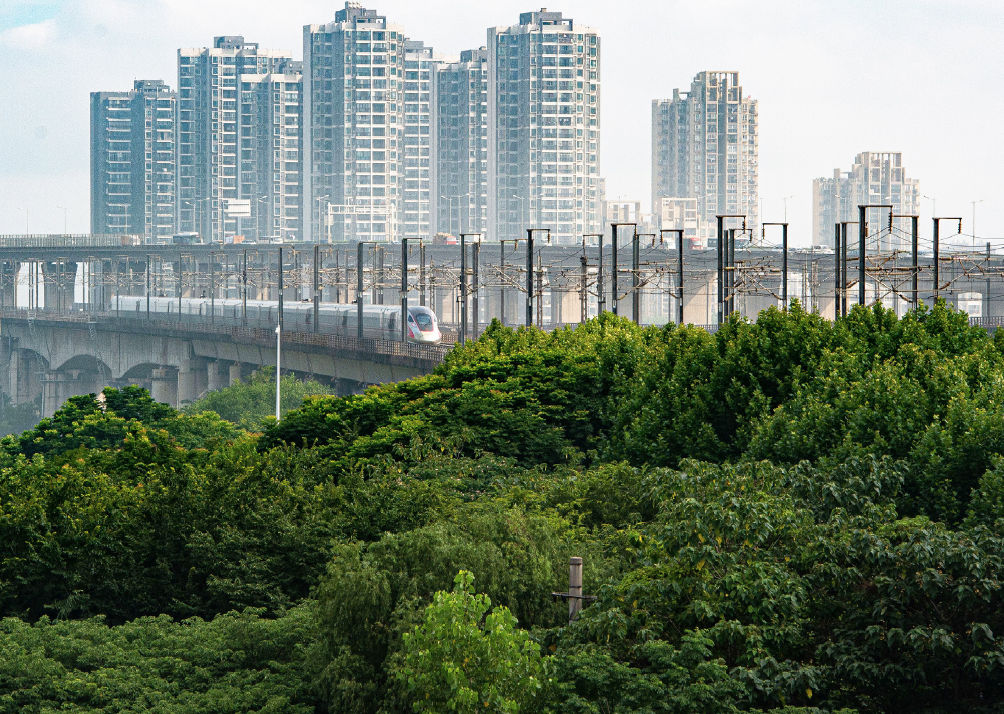Vladimir Ye. Petrovskiy:Achieving Sustainable Development, Over-leaping the “Middle Income Trap”
The upcoming 20th Congress of the Communist party of China (CPC) is a good occasion to take stock of China's socio-economic achievements in recent years, including the growth of people's incomes, the improvement of living standards and the eradication of poverty, which are directly linked to the opportunities and prospects for economic growth. Recent years have been marked by discussions among experts and economists about whether China will fall into the "middle income trap". China also clearly realized that the accelerated development of innovations and high technologies would help to avoid the "middle income trap". As important as the issue of the middle income trap is, it should by no means be seen as the top priority for the CPC leadership and the Chinese government.
Author: Vladimir Ye. Petrovskiy, Dr.Sc. (Political Science), Chief Academic Research Fellow, Institute of Far Eastern Studies of the Russian Academy of Sciences, Russia
Whether China will fall into the “middle income trap”
Recent years have been marked by discussions among experts and economists about whether China will fall into the “middle income trap” - a situation in which the growth of the country's economy slows down and eventually stops after reaching the middle income level. Such a threat became apparent in China at the turn of the 2010s, despite the fact that China joined the ranks of countries with an average income level 30-40 years later than neighboring Japan and the Republic of Korea, as well as Latin American states.
As noted then in the commentary of some media, the factors that result in the formation of a “middle income trap” in China may be reaching the limits of urbanization and industrialization, the possibility of abandoning agricultural workers becoming less and less, lack of skills and barriers to systemic nature which also impede a significant increase in productivity. Among the features of countries that fall into the “middle income trap”, are a large gap between the poor and the rich and in incomes of the population, slow accumulation of human capital, unsuccessful transformation of the growth model, a weak financial system, difficulties associated with the movement of workers strength.
The thesis about the “middle income trap” for China initially became debatable. For example, Steven Roach, a senior fellow at the Jackson Institute for Global Affairs at Yale University and a senior lecturer at the Yale School of Management, argued that China had fallen into the middle-income trap. In particular, he noted that the established trap threshold of $16,000-17,000 makes little sense in a dynamic global economy. Since 2012, the global economy has grown by about 25%. The changing middle income threshold is likely to have risen by a comparable amount over the same period.

Also, not every economic slowdown is like every other. “A state's GDP is a broad aggregation of many activities related to different sectors, types of business and products. A structural shift from one industry to another may give the appearance of an interruption in growth, although such an interruption may be nothing more than the result of a deliberate strategy to rebalance the economy.”
However, the “middle income trap” continued to be perceived in China as a potential threat that required action to eliminate it. Now various, including “exotic” versions are being put forward in this regard. For example, some Indian experts (Prem Shankar Jha and others) claim, with reference to Bruno Makaes’ book “Belt and Road: A Chinese World Order”, that the widely known Belt and Road Initiative (BRI) arose precisely as China’s attempt to avoid the “middle income trap”, due to its need to maintain and expand the structure of trade relations that it has been building since the 1990s. and on which its internal stability and prosperity are now based.
In his analysis, Makaes suggests that China only fully realized the middle income trap when wage rates rose by 12% a year from 2009 to 2013. This prompted an attempt to move up the production chain that underpins the BRI.
At the same time, according to the aforementioned experts, China did not suddenly fall into the “middle income trap” and was not taken by surprise by it. As early as 2002, the Association of Southeast Asian Nations (ASEAN) and China signed a Framework Agreement on Comprehensive Economic Cooperation and subsequently a free trade agreement, the purpose of which was to purchase components for their export products from the cheapest sources.
The extent to which this strategy helped break out of the middle income trap can be judged from trade data for the first quarter of 2020, when ASEAN became China's largest trading partner, not the US or the European Union. China's trade with ASEAN as a whole grew by 6%, while its trade with Vietnam and Indonesia rose by 24% and 13%, respectively. Thus, China's imports from ASEAN include goods that use cheap labour and goods that use sophisticated technology.
Accelerated development of innovations and high technologies
will help to avoid the “middle income trap”
China also clearly realized that the accelerated development of innovations and high technologies would help to avoid the “middle income trap”. In 2015, the Chinese government prepared the Made in China 2025 (MIC2025) industrial development strategy, which prioritizes the development of high-value-added industries in the field of high technologies, including an increase in the production of parts, components and assemblies in the aerospace, telecommunications, energy generation and manufacturing industries. industry, up to 40% of all manufactured goods in China by 2020 and up to 70% by 2025.
Now in China, the development of a new strategy to replace MIC2025 - Created in China, which focuses not on the implementation potential, but on the development and design potential in industry and high-tech industries, is being completed. In this regard, one cannot but pay attention to the study of South Korean scientists devoted to this, the authors of which state: “The middle income trap can be called the trap of the average level of innovation, or the trap of potential transformation, since the inability to move from the implementation potential to the design potential is the fundamental reason for falling into this trap.”
More recently, China has begun creating its own conceptual developments in such complex system sectors as high-speed rail, power generation and transmission, consumer electronics (mobile phones), as well as electronic payment systems as an innovative business model. The size of the domestic market allowed this process to be accelerated. A wide range of entrepreneurs endowed with creative imagination, created conceptual developments in different market niches, which in a limited period of time ensured the accumulation of more trial and experience in absolute terms than in any other country (including developed ones).
In addition, through state-owned enterprises, the Chinese government assumes some of the associated risks. Foreign companies voluntarily or involuntarily (for the right to access the Chinese market) transfer their own accumulated experience, which contributes to the development of innovative networks. Export markets dominated by Chinese products have also served as a platform for trial and error, as they have given Chinese entrepreneurs access to information about a wide variety of customer needs.
Currently, China’s ability to avoid the “middle income trap” is being linked to the reform plan unveiled at the 19th CPC Congress in 2017. According to the vice-chancellor of the People’s University of China, the CCP leaders are struggling with the main problems facing the economy, which could stagnate the economy and slow down further supply-side structural reform, strengthening risk controls, streamlining macro regulation, facilitating market access and stimulating innovation.
In particular, General Secretary of the CPC Central Committee and Chairman of the People's Republic of China Xi Jinping spoke at the congress about focusing on the real economy, advancing manufacturing to the mid-high level of the global value chain, introducing a negative list regarding market access throughout the country, supporting the growth of private business, and also about the further opening of the service sector and plans for China to become a country of innovators.

China has achieved the poverty reduction goal
ahead of schedule is an outstanding success
As important as the issue of the middle income trap is, it should by no means be seen as the top priority for the CPC leadership and the Chinese government. Among the highest priorities, rather, is the fight against extreme poverty and poverty, as part of the strategy of building a “moderately prosperous society” in China. Here it is supposed to focus not so much on innovation and investment as on social policy measures and even social engineering.
For example, a recent white paper on poverty alleviation published in China states that “Taking public satisfaction as an important yardstick to judge the effectiveness of poverty elimination, the Party has concentrated its efforts on guaranteeing the basic needs of the poor. It would rather cut down on the number of major projects in favor of investment in poverty elimination; it would rather penalize short-term, partial or local interests to ensure the cause is well served and guaranteed; and it would rather slow the pace of economic growth to ensure the task of poverty alleviation is accomplished on schedule.”
The CCP’s anti-poverty strategy has produced outstanding results, according to the white paper. During the period of reform and opening up, more than 770 million rural Chinese people living below the current poverty line were lifted out of poverty, which is more than 70% of the global rate in the same period according to the World Bank's international poverty standard. Against the backdrop of severe global poverty and a widening gap between rich and poor in some countries, China has won the battle against extreme poverty and achieved the poverty reduction goal of the UN 2030 Agenda for Sustainable Development, 10 years ahead of schedule. And that in itself is an outstanding success.
掃描二維碼分享到手機














